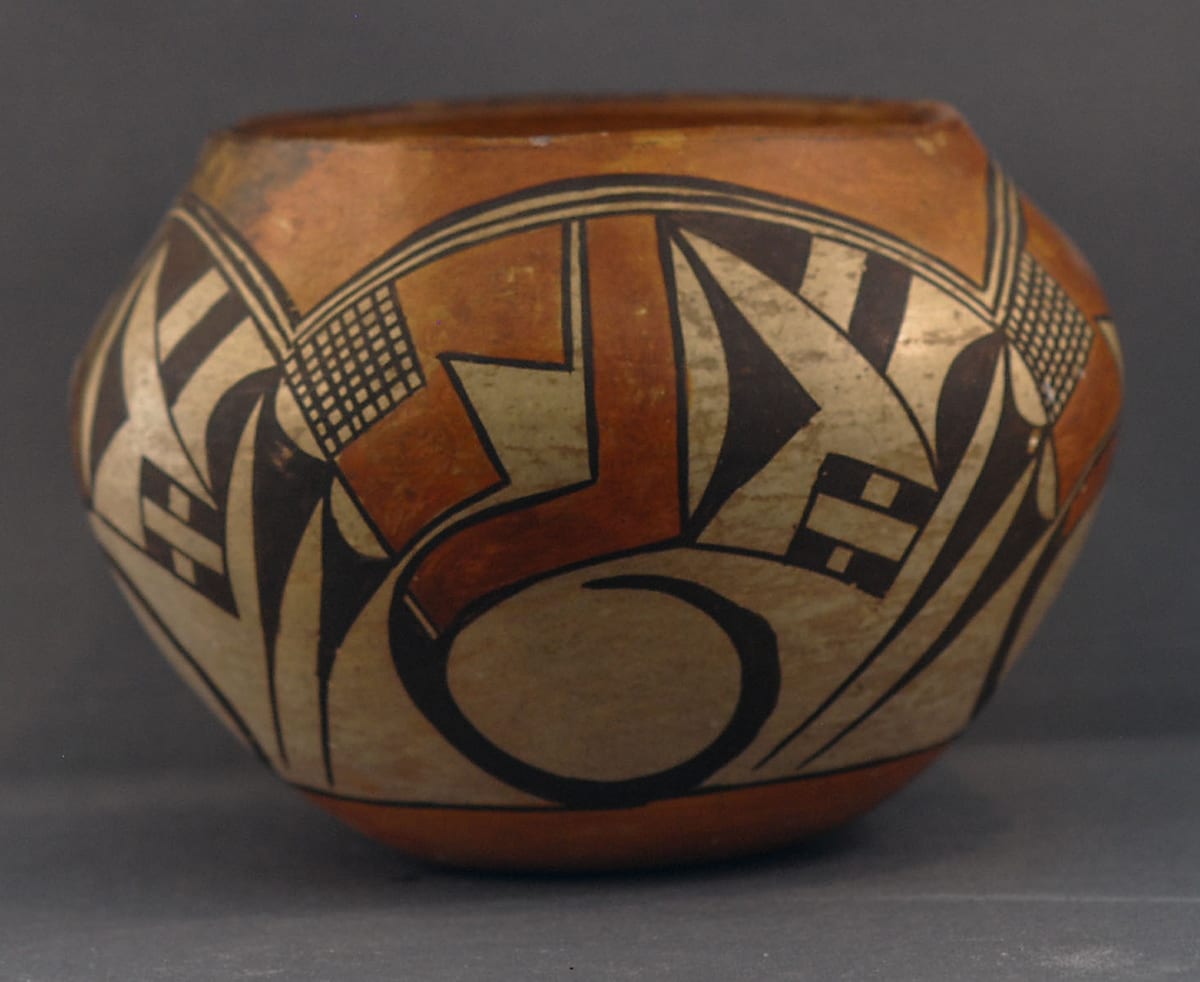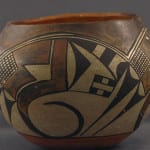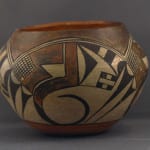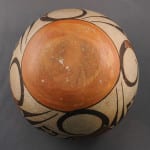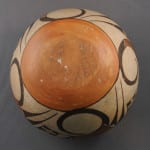Although unsigned, the thin walls of jar 2012-19 and the texture of the clay used clearly identify the origin of this pot as “Acoma.” Much of the design, however (and particularly the four black curved elements) are directly borrowed from Hopi. It is well-known that the historical contact between Hopi and Zuni influenced the development of pottery in both directions:
— Zuni Matsaki (ca. 1475 to 1680 CE) looks like Hopi Sikyatki pottery (see 2012-22).
—Hopi Polacca ware (ca. 1700 to 1890 CE) looks like contemporaneous Zuni ware (see 1990-03).
—There is a Hopi jar in the collection (ca. 1900) that seems part of the Sikyatki Revival tradition but has definite Zuni design elements (2011-28).
—Occasionally, modern Hopi pots look quite Zuni.
Jar 2012-19 is evidence that Hopi designs spread further east than Zuni. Whether this is because a Hopi woman married an Acoma man and took her Hopi family designs to her husband’s home or because of general cultural trends is unknown.

